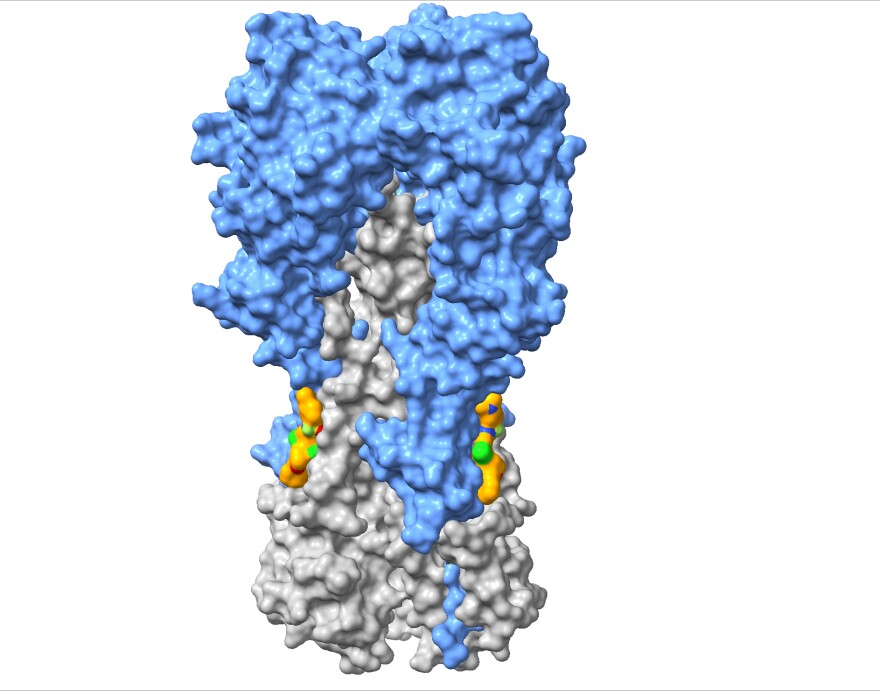The flu is a viral chameleon, changing shape so fast it’s hard for vaccines to keep up. Chemical biologist Dennis Wolan said creating a seasonal flu vaccine is a little like viewing a crystal ball to try to decide which flu you’ll actually be fighting off.
“That’s one of the issues with vaccines is that they’re so specific that sometimes they miss the mark if we’re infected with another strain of the virus,” said Wolan, a scientist with Genentech.
Wolan and his partners at Scripps Research, where he used to run a lab, have been trying to come up with a different solution for stopping the flu that can stop many strains of it. Their possible solution is a molecule that binds to and disables that part of the virus that allows the flu to enter our cells.
If the flu had a key to unlock the door to a human cell it would be hemagglutinin, a protein spike that’s part of the virus. Disabling that key might be better than targeting the whole virus, as vaccines do, because the key and the lock don’t change from one flu strain to the next.
“This molecule, what it does is very broadly neutralizing. Meaning it can (potentially) target all the different subtypes of the different flus,” Wolan said.
Ian Wilson is a professor of structural biology at Scripps Research. Sitting in a lab conference room, he taps on his laptop to project two pictures on the wall. Both show protein spikes of the flu virus and the place where their molecule has attached to it.
“The spikes are highly variable,” Wilson said. “But the bottom part is highly conserved. And that’s the part that we are targeting.”

Another potential advantage to the Scripps approach to therapy is that it could be taken as a pill, not as an injection. Wilson says our history shows the need for better flu protection.
“We’d like to have something on the shelf potentially for new pandemics,” Wilson said. “We’re currently worried at the moment for these new H5 ones that are spreading through the world. They started in wild birds but they’ve been spreading to mammals."
Wilson said their initial research is focused on the H1N1 virus, which has brought us several pandemics, including the Spanish Flu and the Swine Flu.
Testing of the therapeutic molecule has been successful, but so far only in the lab. Even so, Wolan said he sees a lot of promise in this idea of targeting the key that lets a virus into our cells.
“I think it expands, first of all, way beyond just flu. I think this goes into all different types of viruses. This is providing a new pathway to combating viral infections,” he said.
The next step in the research is to see how it works in mice.





